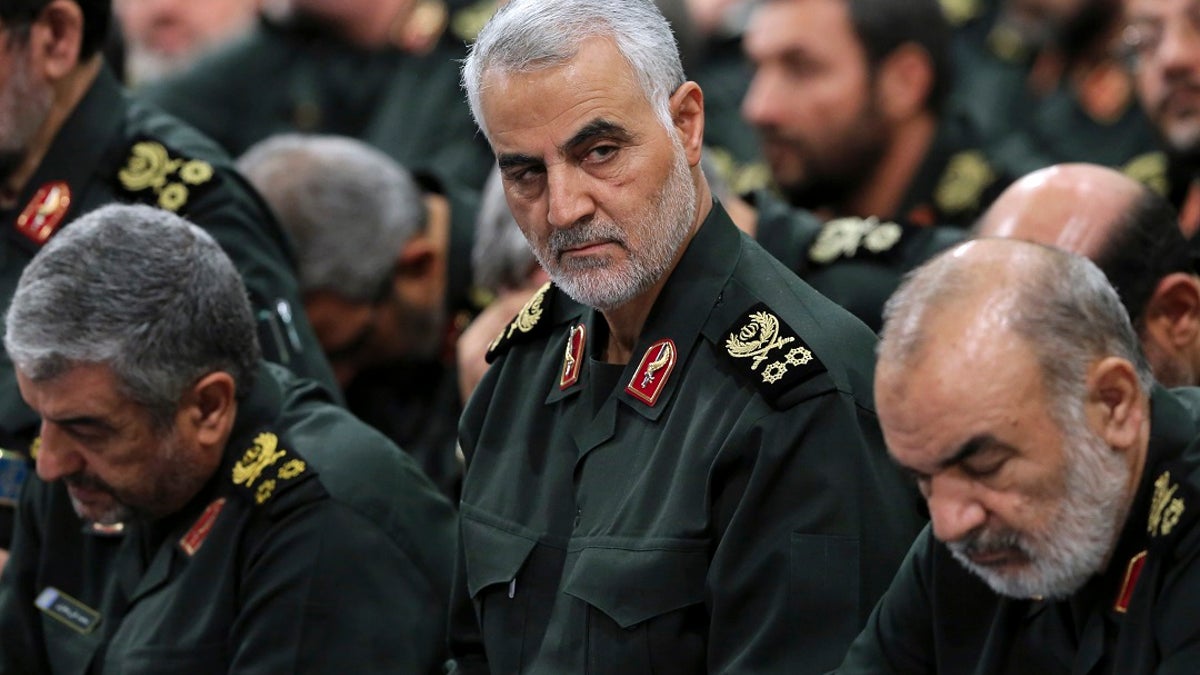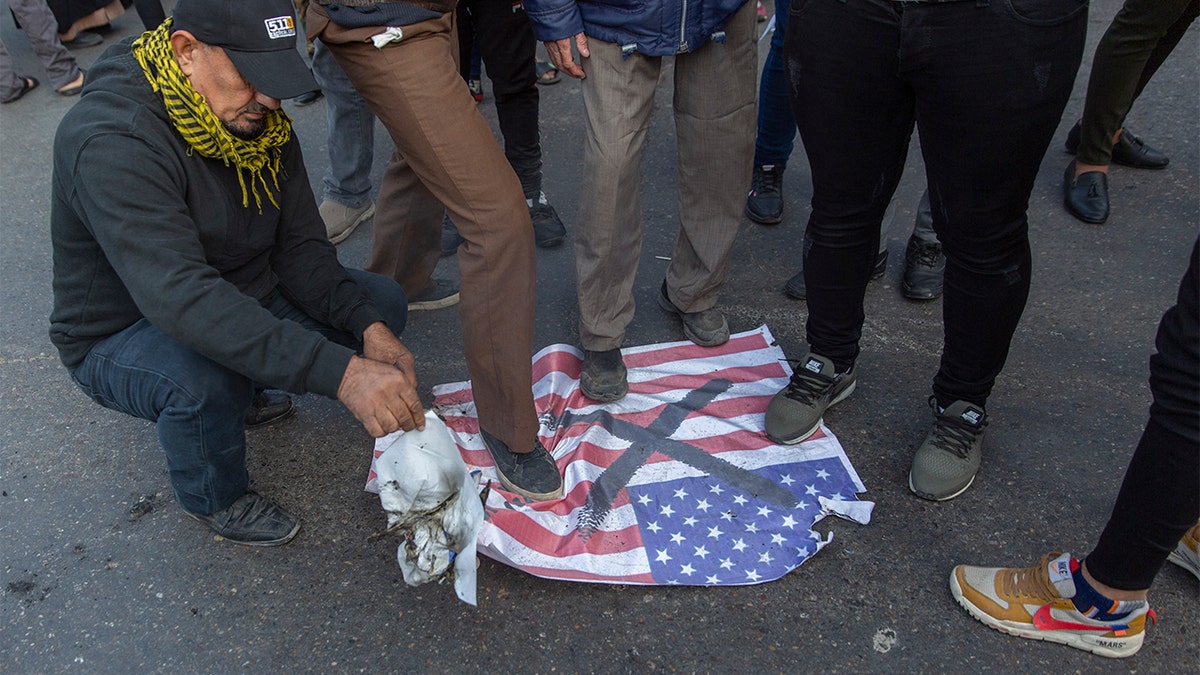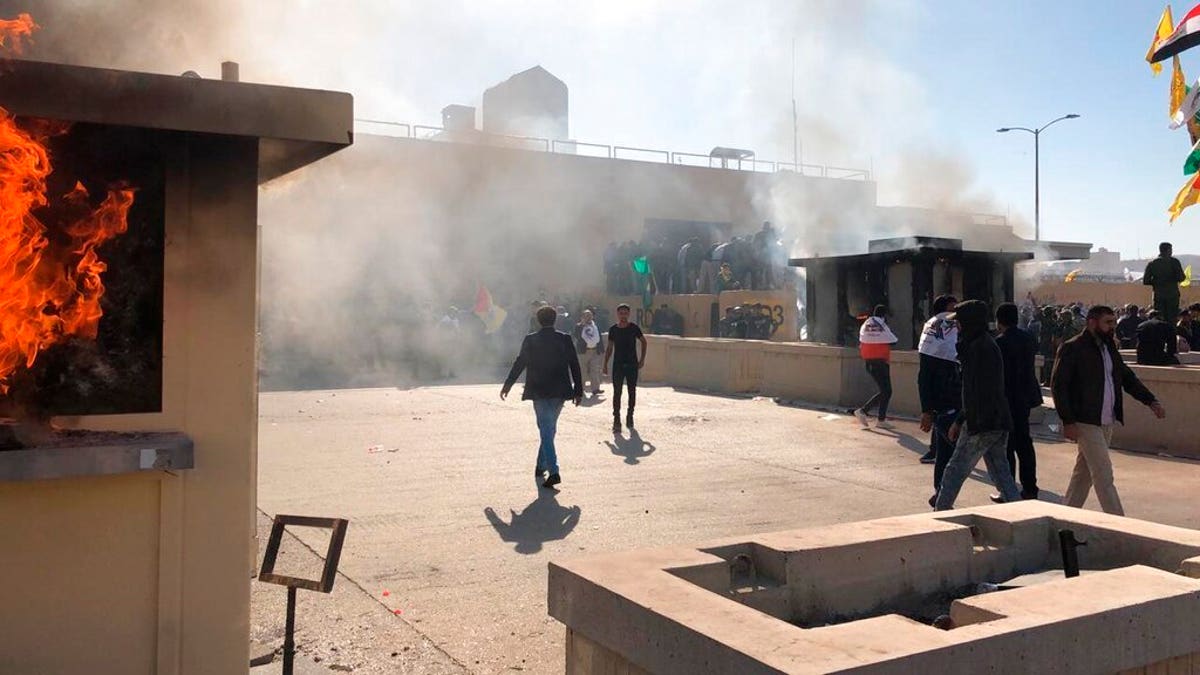U.S. launches retaliatory strikes targeting Iran-backed militias in Iraq
Five sites south of Baghdad have been hit by U.S. war planes; Jennifer Griffin has the details from the Pentagon.
While the coronavirus pandemic spreads around the globe, U.S. troops stationed in Iraq continue to battle the threat of Iranian-backed militias, in recent days going head-to-head with what is considered one of the most shadowy and lethal units: Kataeb Hezbollah.
On Monday night, rockets hit a base in Iraq again, the third attack in the past week blamed on Iranian-backed forces.
The two rockets landed in “no man’s land” on the Besmaya base located southeast of Baghdad, a U.S. military official told Fox News. There were no injuries this time, but last week, two Americans were killed and three were wounded, two of them seriously in two separate rocket attacks at Camp Taji. A British Army medic was also killed.
U.S. airstrikes were launched after the first attack, destroying five weapons storage sites, according to the head of U.S. forces in the Middle East, Gen. Kenneth McKenzie.
So who is the mysterious wing largely believed to be behind these attacks and routinely deemed an extension of the Iranian Revolutionary Guard Corps (IRGC)?
"They have long represented a significant threat to the United States and our operations in Iraq. Operating through them, Iran is able to keep us, and those working with us in the country, under threat," Brett Bruen, a former U.S. diplomat who served as director of global engagement at the White House, told Fox News.
"This limits our freedom of movement and often has stymied our progress. They engage in attacks designed to send messages to Washington and our allies. These include missile launches, mobilization of armed groups, and protesters."
3 AMERICAN TROOPS WOUNDED IN IRAQI ROCKET ATTACK

Deceased Iranian Revolutionary Guard Gen. Qassem Soleimani, center, attends a meeting in Tehran in 2016. A woman in Kosovo was arrested Tuesday over social media post criticizing the United States for killing the Iranian military commander in a drone strike last week. (via AP, File)
The U.S. State Department calls Kataeb Hezbollah -- often referred to as KH -- "a radical Shia Islamist group with an anti-Western establishment and jihadist ideology."
US FORCES LAUNCH STRIKES TARGETING IRAN-BACKED MILITIAS AFTER DEADLY ROCKET ATTACK, OFFICIAL SAYS
In late December, protesters – largely KH members and supporters – attempted to storm the U.S. Embassy in Baghdad, tossing stones and purporting to torch a security post, just days after a strike that left one American dead. In response, embassy security fired back with stun grenades and tear gas. But tensions over ensuing weeks only escalated.
Last month, the State and Treasury departments announced that KH's Secretary-General, Ahmad al-Hamidawi, had been characterized as a "specially designated global terrorist." Its former leader and founder, Abu Mahdi al-Muhandis, was killed alongside Quds Force Commander Qassem Soleimani in a targeted U.S. strike earlier this year.
And this month has seen a flare-up in attacks on bases in Iraq, culminating in the deaths of two Americans and one British soldier last week.
IRAN LIKELY BEHIND ATTACK THAT KILLED AMERICANS IN IRAQ: US GENERAL

Mourners step over a U.S. flag before burning it during the funeral of Iran's top general, Qassem Soleimani, and Abu Mahdi al-Muhandis, deputy commander of Iran-backed militias in Iraq known as the Popular Mobilization Forces, in Baghdad, Iraq, Saturday, Jan. 4, 2020. Thousands of mourners chanting "America is the Great Satan" marched in a funeral procession Saturday through Baghdad for Iran's top general and Iraqi militant leaders, who were killed in a U.S. airstrike. (AP Photo/Nasser Nasser)
"KH takes its marching orders from Iran's Islamic Revolutionary Guards Corps, whose mission is to defend and promote Iran's Shiite Islamic revolution. Targeting Americans is inseparable from that mission," explained David Adesnik, a senior fellow and the director of research at the Foundation for Defense of Democracies (FDD).
Brought to life around 2007 in response to the U.S. invasion of Iraq, the unit was officially slapped with the U.S. State Department's Foreign Terrorist Organization label in July 2009. KH is the only Iranian proxy in Iraq that the U.S. has designated as a Foreign Terrorist Organization.
According to an analysis by the Center for International Security and Cooperation at Stanford University, KH was responsible for the majority of its attacks against coalition forces at the height of the Iraq surge, between 2008 and 2011.
IRAN'S CORONAVIRUS COVER-UP: IS IT NOW THE EPICENTER OF THE VIRUS?
In June 2008, KH launched an attack intended to target coalition forces, but instead killed 18 civilians, wounded 29, and razed 19 homes. Later that year, they launched a rocket attack that took the lives of two U.N. contractors and injured 15 others. In 2011, KH went on to kill six U.S soldiers at Baghdad International Airport.

Dozens of Iraqi Shiite militia supporters are seen at the U.S. embassy compound where a fire was set to a reception area, in Baghdad, Iraq, Tuesday, Dec. 31, 2019. An angry mob smashed a door and stormed inside the compound Tuesday following deadly U.S. military airstrikes on Sunday against the Kataeb Hezbollah militia in Iraq and Syria. (AP Photo/Qassim Abdul-Zahra) (AP)
The Pentagon attributes 603 deaths during the Iraq War to Iranian proxy forces.
And while many in Iraq view them as terrorists, others see them as freedom fighters and see the U.S. as aggressors.
"The American military forces face great and unacceptable challenges because they violated the agreed rules, while the Iraqi government has become impotent because of the problems it faces between the parties. It has become unwelcome," noted Ali Altalkani, a Baghdad-based journalist and writer. "The cycle of violence does not seem to end soon. Unless some kind of agreement is concluded, perhaps this agreement also relates to Iran."
While much of KH's operations remain shrouded in secrecy, it is estimated by intelligence analysts that the group has anywhere between 500 and 5,000 members, with fighters earning between $300 and $500 per week and bases littered across the southern portion of the country.
CLICK HERE FOR THE FOX NEWS APP
Following the U.S. pullout of all troops in Iraq at the end of 2011, KH is believed to have sent large contingencies of fighters to Iran for training from the elite Quds Force. And as the Syrian Civil War took hold that year, KH expanded its footprint by sending members to battle over the border in support of embattled President Bashar Assad.
"Their aim in attacking us is to change the calculus of Washington. They want to show their capabilities to inflict costs in response to the actions we take," Bruen added. "Whether it's economic sanctions on Iran or operations against KH leadership in Iraq, these are asymmetric answers to pressure and punishment we have put on them and their backers in Tehran."
Fox News' Lucas Tomlinson contributed to this report.
